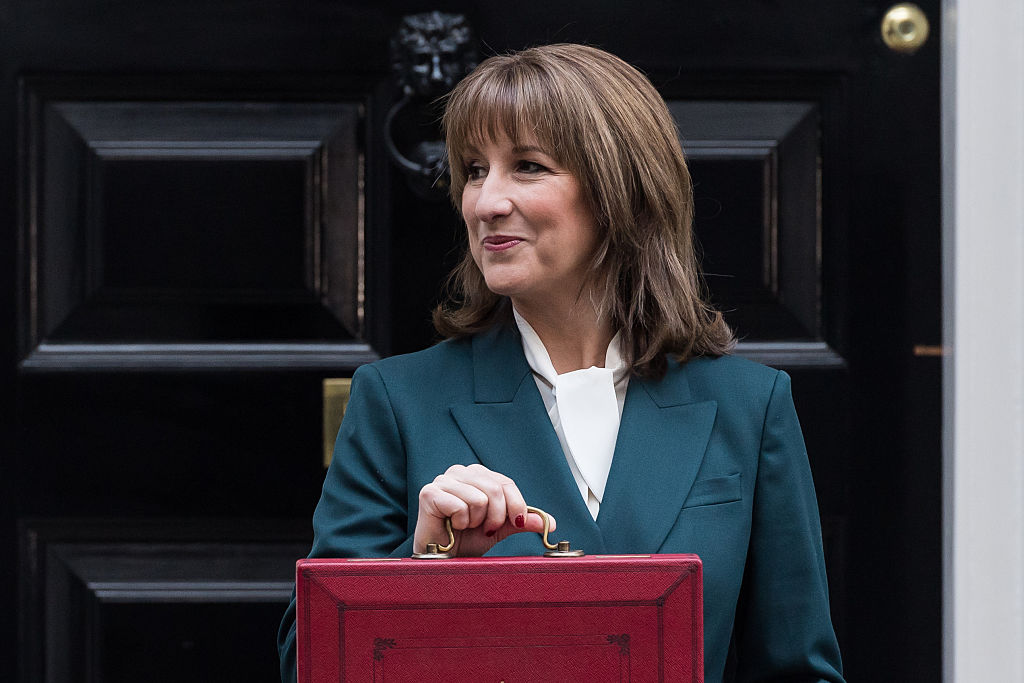Central bankers are playing a giant game of Jenga with markets
Forget interest rates or money-printing, central bankers’ most useful tool is expectations management. Tugging at bricks, testing reactions, keeping markets from tumbling. John Stepek explains how to play the game.


Last week, European Central Bank boss Mario Draghi found himself in the pleasant Portuguese town of Sintra, not far from Lisbon, with his fellow eurozone central bankers.
"Tough job", you might think.
Draghi made the very gentle suggestion that the state of the eurozone economy didn't look as awful as it has for the past ten years or so, and that it might be possible at some point to stop printing quite as much money.
MoneyWeek
Subscribe to MoneyWeek today and get your first six magazine issues absolutely FREE

Sign up to Money Morning
Don't miss the latest investment and personal finances news, market analysis, plus money-saving tips with our free twice-daily newsletter
Don't miss the latest investment and personal finances news, market analysis, plus money-saving tips with our free twice-daily newsletter
Markets immediately sent the euro surging, eurozone bond yields rising (and prices falling), and suddenly everyone decided that monetary policy was heading higher.
Not quite the outcome that Draghi wanted, as a U-turn the following day made clear.
Turns out this central banking malarkey really is quite a tough job.
Why raise rates at all?
Most of them even Bank of England governor Mark Carney have been starting to suggest that rates might go up a bit more quickly than the markets currently expect.
(Although given that today is the ten-year anniversary of the last time the Bank of England raised interest rates, you can forgive them for being a bit rusty, I suppose.)
It's not even just the governors you need to listen to now. Minor members of policy-making committees keep getting their faces into the news, declaring that rates should go one way or another.
If they want rates to go up, why all the teasing? Why not just get on with doing it?
Let's try to unwrap this a bit, because all of this to-ing and fro-ing is going to shape the market environment for the foreseeable future.
Central banks know that pumping a load of money into markets with quantitative easing (QE) has had some sort of impact. They might not be sure of its precise effects, but it hasalmost certainly helped to push the prices of things up.
Indeed, as I argued last week, keeping interest rates at or near (or below, in some cases) the zero-percent level has created very real distortions in both the economy and the markets.
The biggest distortion of all is the idea that central banks have put some sort of "floor"under the market. This is the old "Greenspan put" the idea that took hold under US Federal Reserve chairman Alan Greenspan, that he would always cut rates rather than let markets crash but on a global scale.
It therefore seems logical to suppose that pulling the money back out will also have some sort of effect. It will almost certainly help drive the prices of things lower. And it's possible that some of the things that only exist today because of 0% interest rates may cease to exist.
So why move at all? Well, firstly,if you leave interest rates where they are, then you are effectively admitting defeat. If you can't raise them ten years on from the financial crisis, then when will you ever be able to raise them?
Second, there are modest signs that even if inflation isn't returning quickly, deflation is hopefully beaten, and if nothing else, we're certainly not in emergency territory anymore.
Third, some central bankers actually understand that 0% interest rates are as much hindrance as help, particularly at this far remove from the crisis that created them.
Fourth,if the US keeps raising rates and everyone else doesn't, the US dollar will end up rocketing, global monetary policy will tighten right up, and we'll probably end up with an emerging-market debt crisis or worse (that's why they're all turning hawkish at the same time George Saravelos at Deutsche Bank even described it as "the Sintra pact").
And finally,some governments are threatening to spend more money to boost the economy. Some central bankers want them to act on that they're fed up taking sole responsibility for the lack of growth. Others want to raise rates to offset any ensuing inflation. Either way, it's an argument for pushing rates at least a bit higher.
A giant game of asset-price Jenga
How do you do it?
The main thing to remember is that central bankers really only have one tool in their big box of tricks. It's not interest rates, or money printing, or macro-prudential regulation. It's expectations management.
Markets are not efficient in the academic sense they aren't robotically efficient, with prices immediately leaping to incorporate all known information at any given moment. There are always quirks that can be profitably ironed out by the perceptive.
And there's no doubt that they are prone to herding and booms and busts that's just human behaviour.However, given enough participants with sufficiently diverse views, they are pretty good at setting prices sensibly.
But one major problem in markets, which has only got worse since the financial crisis, is that investors can't simply rely on "fundamentals" to set prices.Instead, they have to consider what central banks who are not motivated by profit, and so are hard to second-guess will do next.
And for a very long time now, no one has lost money by assuming that central banks will take any opportunity to loosen monetary policy.Now, central bankers have to get investors used to the idea that monetary policy will be changing direction but only at a pace that the economy can cope with.
But as the Financial Times put it the other day: "after three decades of mostly falling bond yields, changing course is extremely difficult when prices for trillions of dollars of assets hang on every word".
So rather than just outright raising rates, they hint to markets that rates will rise. They then look to see how markets react. And if necessary, they rein those expectations right back.
That's what we've just seen with the ECB.
Problem is, this "two step forward, one step back" shuffle is incredibly hard to do. Going back to the Jenga image, it's like giving a brick a gentle tug, just to see how wobbly things get. But if you're not careful, even a gentle tug can tip the whole thing over. And then you're back to square one.
The last thing central bankers want is to trigger a bear market, because then they'll only have to pile back in with more rate cuts and money printing. But nearly a decade of 0% rates has left us with such a distorted economy that they may end up with no other option.
What can you do about it? Watch markets closely, hang on to gold just in case of emergencies, and keep a bit more cash than you usually do to take advantage when and if the markets do panic.
Get the latest financial news, insights and expert analysis from our award-winning MoneyWeek team, to help you understand what really matters when it comes to your finances.
John Stepek is a senior reporter at Bloomberg News and a former editor of MoneyWeek magazine. He graduated from Strathclyde University with a degree in psychology in 1996 and has always been fascinated by the gap between the way the market works in theory and the way it works in practice, and by how our deep-rooted instincts work against our best interests as investors.
He started out in journalism by writing articles about the specific business challenges facing family firms. In 2003, he took a job on the finance desk of Teletext, where he spent two years covering the markets and breaking financial news.
His work has been published in Families in Business, Shares magazine, Spear's Magazine, The Sunday Times, and The Spectator among others. He has also appeared as an expert commentator on BBC Radio 4's Today programme, BBC Radio Scotland, Newsnight, Daily Politics and Bloomberg. His first book, on contrarian investing, The Sceptical Investor, was released in March 2019. You can follow John on Twitter at @john_stepek.
-
 London claims victory in the Brexit wars
London claims victory in the Brexit warsOpinion JPMorgan Chase's decision to build a new headquarters in London is a huge vote of confidence and a sign that the City will remain Europe's key financial hub
-
 Rachel Reeves's Autumn Budget: What it means for the UK
Rachel Reeves's Autumn Budget: What it means for the UKOpinion A directionless and floundering government has ducked the hard choices at the Autumn Budget, says Simon Wilson
